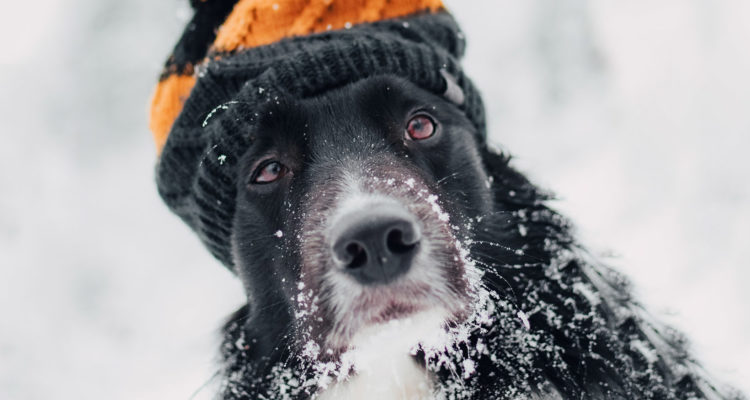8 Winter weather tips to keep your dog safe during the cold winter months.
It’s time to think about how our furry friends experience the winter cold. It is important to keep these helpful tips in mind when taking your dog out in the elements this frosty season. Keeping them warm, safe, and healthy is highly important during this time of year.
Story by Ann Butenas
1. Protect the Paws
Your dog might not be an Alaskan sled dog, but when the temperatures drop and snow and ice cover the ground, it is important to protect your dog’s paws with dog booties or protectors. No matter how hardy you may think your dog is, his paws should be protected from ice, snow, salt, salt melt, chemicals, and other elements of winter.
2. Keep Your Garage Pet-Proofed
Keep the anti-freeze out of your dog’s curious nose and tongue. The sweet smell and taste will attract him but ingesting it can also kill him. Clean up any spills right away. If you suspect your dog has licked any, get him to a vet immediately. Common symptoms include vomiting, diarrhea, and stumbling.
3. Heated Dog Bed
Invest in a heated dog bed, which is safe for dogs. Find one with an automatic shut-off. These beds are great for dogs who tend to get a bit chilly in the house. Your pup will love you for it.
4. Appropriate Winter WardRobe
Even though dogs come with their own built-in coat, it is not always enough for the more extreme winter elements. (Would you walk in a blizzard wearing just a light jacket?) Make sure your dog has a good winter coat or sweater. This is especially important for the smaller, shorter-haired dogs and even the bigger, short-haired ones like greyhounds.
5. Age Is A Number
Just like with humans, young dogs and senior dogs have a tough time in colder temperatures. As a result, their reactions to changes in weather are more extreme. While playing out in the snow with them may sound harmless and fun – even for a minute, it can be too much for their overall physical being.
6. Keep the Feet Well-Groomed
If your dog’s paws are not trimmed, ice balls can accumulate between the pads and the toes, especially on long-haired dogs. Be sure to trim the hair so it is even with the surface of the foot.
7. Stay Indoors Whenever Possible and Limit Time Outdoors
Just as we are susceptible to frostbite, so are dogs. In extremely cold temperatures, it is best to keep them inside. However, some of the heavier-coated breeds tend to thrive in cold temperatures. Dogs can most notably experience frostbite on the flaps of their ears and on their tails. Never leave a dog unattended in cold temperatures for any length of time. The types of dogs at greatest risk for frostbite include puppies, senior dogs, and short-haired breeds.
Even the bigger, fuzzier dogs need a bit of time to adjust to freezing temperatures. Get them acclimated with shorter romps outside until they adjust to the change in weather. However, your focus should be on indoor fun and games. Your dog still needs physical and mental stimulation in the winter. You simply have to change up the routine.
For example, play that childhood favorite game of Hide and Seek. This game works best if your dog understands some basic commands. Lead your pup to a room and command him to stay. Then you leave and hide in a different room, call out his name and let him come find you. If you are daring, create an obstacle course using old boxes or some books. Have your dog crawl through broken down boxes or jump over a stack of books. This will help with agility training.
8. Keep Your Dog Leashed
If your dog becomes separated from you in the snow, he can get lost. His usually keen sense of smell can be dulled by the snow. Plus, imagine looking for a white dog in a blizzard. For added ease and convenience, clear a nice path in the snow for your furry friend to make potty breaks a breeze.






